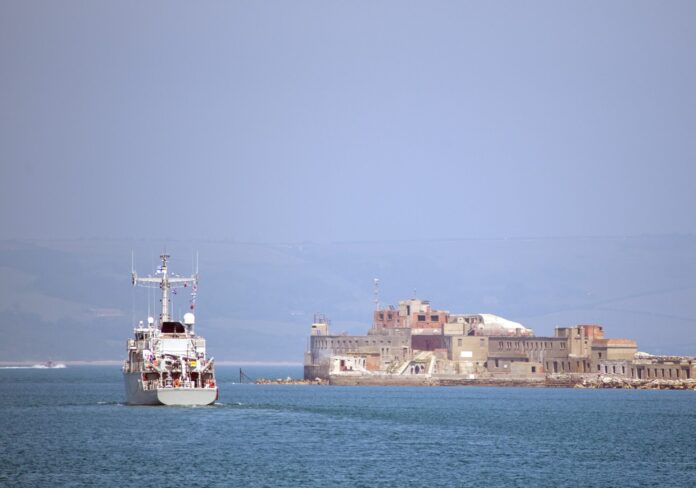
For the third year in a row, the U.S. and partner nations, including Ukraine, have their eyes on the Black Sea’s future and how to deal with the thousands of mines in the region, US Naval Institute News reports.
The Black Sea is currently closed to the U.S. and other non-Black Sea nations after Turkey closed the Bosphorus Strait to warships as a result of Russia’s February 2023 invasion of Ukraine. Despite the U.S., Ukraine and partners are already preparing for one of the largest post-conflict problems: mines.
Ukraine mined the Black Sea as part of its defense against Russia’s Black Sea fleet and potential amphibious landings. Ukraine’s successes with mines, drones and coastal defense led to catastrophic defeats for the Russian Black Sea Fleet, Rear Adm. Mike Mattis, director, Strategic Effects and commander of U.S. Naval Forces Europe/Africa’s Task Force 66, told USNI News.
During Sea Breeze 2025, a two-iteration U.S. 6th Fleet exercise, the U.S. will continue training Ukrainian forces for mine countermeasures while also working with different partners, Capt. Bill Williams, commodore of Mine Countermeasure Group Six, told USNI News. Williams runs the exercise from a command-and-control perspective, he said.
“They’re in a pretty good stage of readiness right now with their mine countermeasures battle staff,” Williams said.
This year, Ukraine is also bringing in two new mine countermeasure vessels donated by NATO countries, Williams said.
The former Belgian MCM ship BNS Narcis and Dutch MCM ship HNLMS Vlaardingen were turned over to Ukraine last month.
As part of the exercise, participating naval forces will conduct mine hunting operations with mine countermeasure vessels, explosive ordnance disposal teams will practice safe disposal and dive teams will train in precision diving and salvage techniques, USNI News previously reported.
Task Force 66 is also part of this iteration of Sea Breeze, which kicked off June 30 in Portland, England, looking at ways to integrate unmanned systems into mine countermeasures.
Sixth Fleet has run Sea Breeze since 1997, but the past couple of years have focused on preparing Ukrainian forces for post-conflict mine countermeasures and how to get assistance from NATO members, Williams said. From a U.S. perspective, the exercise also teaches U.S. naval forces how to integrate with other NATO partners.
For the U.S., Sea Breeze is more focused on the command and control of an operation, while the team also participated in BALTOPS this year, where they helped to clear ports. In the process, they found 37 active mines from previous wars, Williams said.
In addition to the U.S. and Ukraine, naval forces from Bulgaria, Denmark, Estonia, France, Greece, Georgia, Latvia, Poland, Spain, Sweden, Turkey and the United Kingdom are participating. The exercise also gives the U.S. a chance to exercise its MCM unmanned systems. One of the problems with clearing and disposing of mines is the danger mines pose.
Introducing unmanned systems into the explosive ordnance disposal can be safer, Mattis said. Unmanned underwater vessels can also have longer endurance, allowing them to search over longer distances. The U.S. is working to integrate unmanned systems or remotely operated vehicles (ROVs) into mine countermeasures, Williams said.
Right now, the team will use an ROV to find a mine and a similar or the same one to dispose of it, he said.
“ We’re basically reducing the risk to humans by conducting the search, or what we really call the detect to engage sequence, remotely, preventing personnel from getting injured, hurt or killed, worst case scenario,” Williams said.
The team will launch the ROVs off of mine countermeasure vessels or small crafts, Williams said.
Unmanned surface vessels being used in Sea Breeze are meant to help with finding the mines or act as communication relays so there can be more distance between people and the minefields, he said.
The introduction of unmanned systems occurs across the Navy’s mine countermeasure teams, especially as the fleet begins to age out, Williams said. Both the MCM and EOD teams are integrating ROVs and unmanned systems into mine countermeasures.
“It’s been a pretty significant shift with technology increasing over the last 20 years,” Williams said. “Are we 100 percent out of the minefield? No, but I would say we’re close to getting there.”



